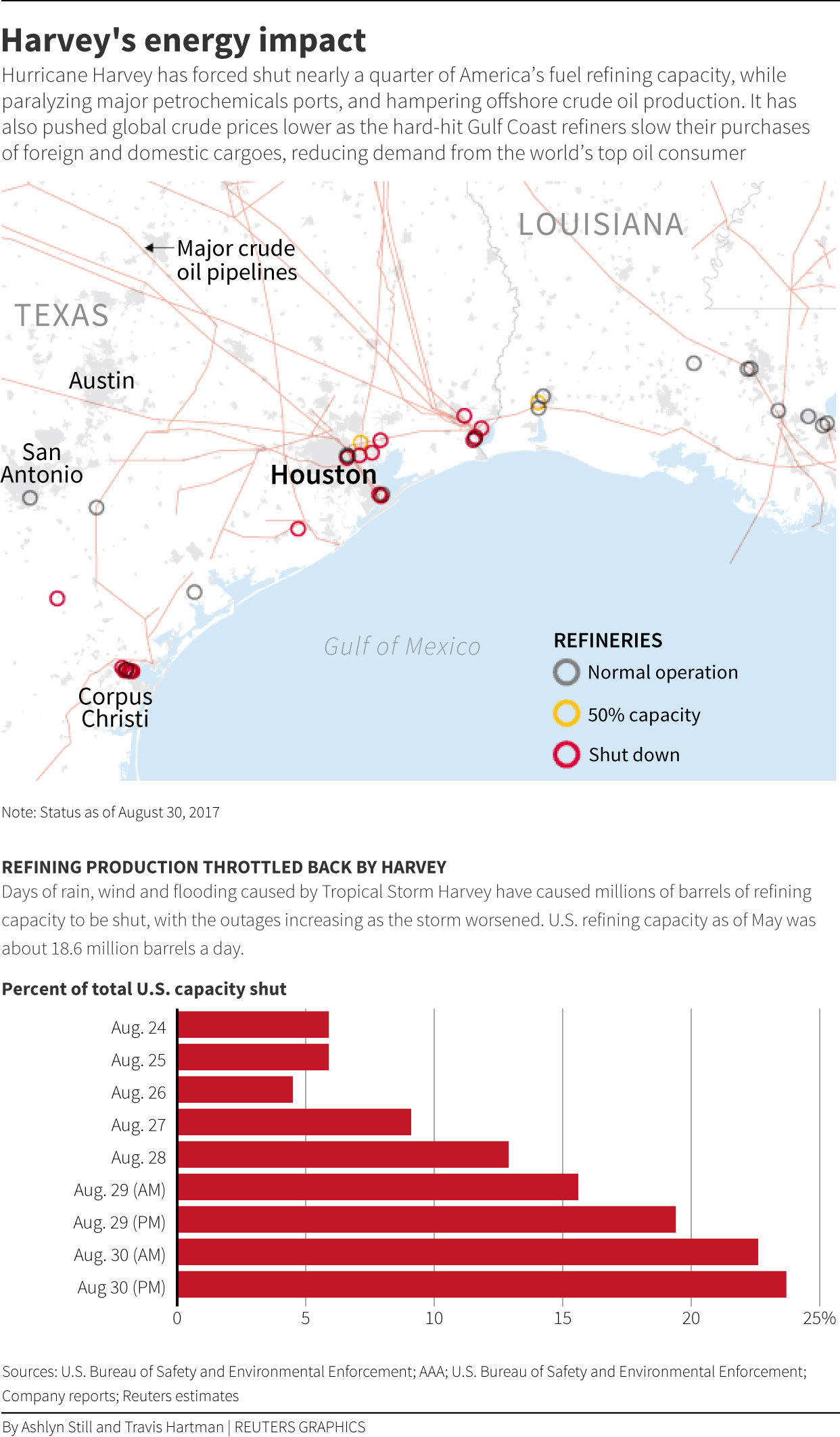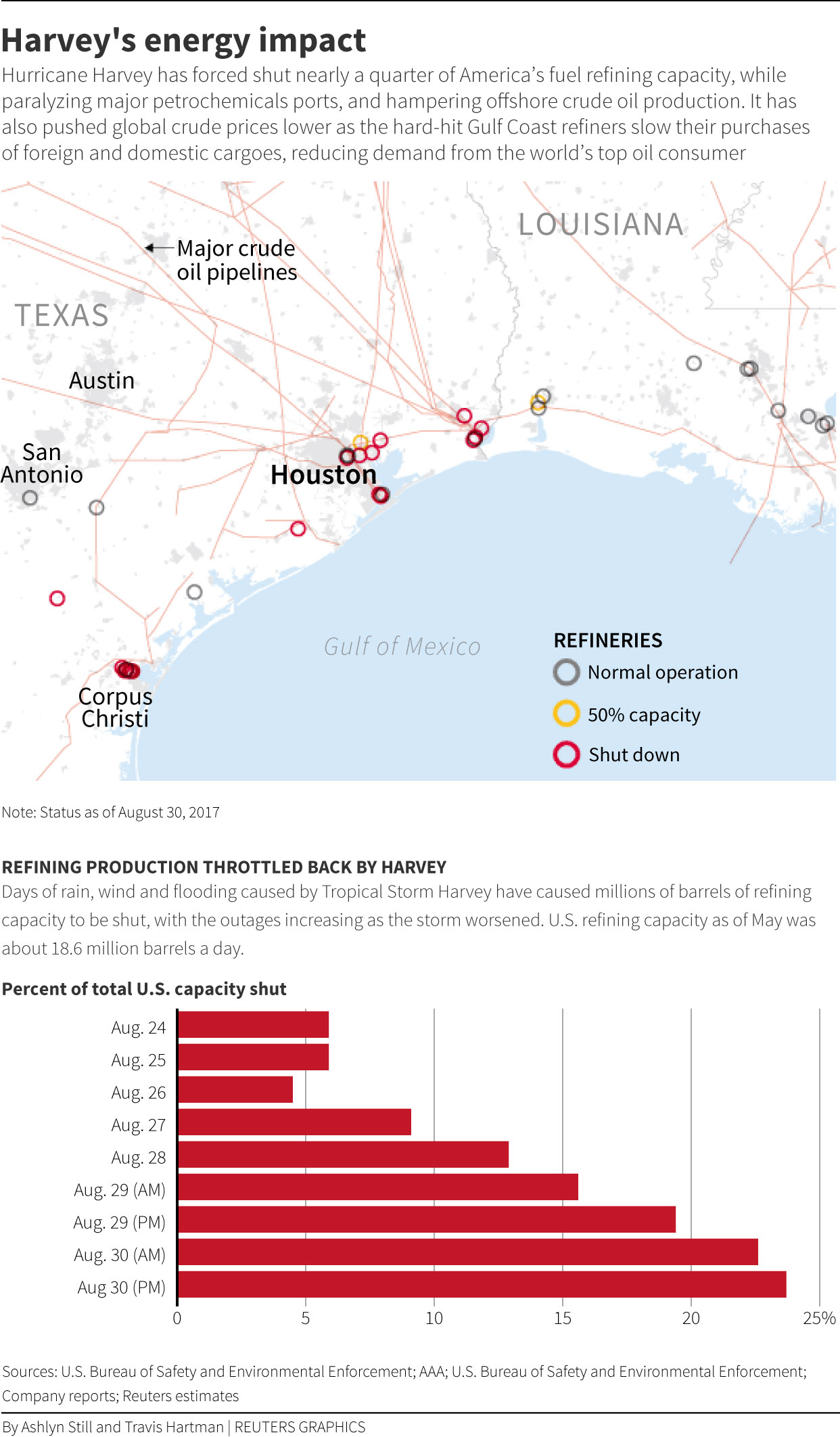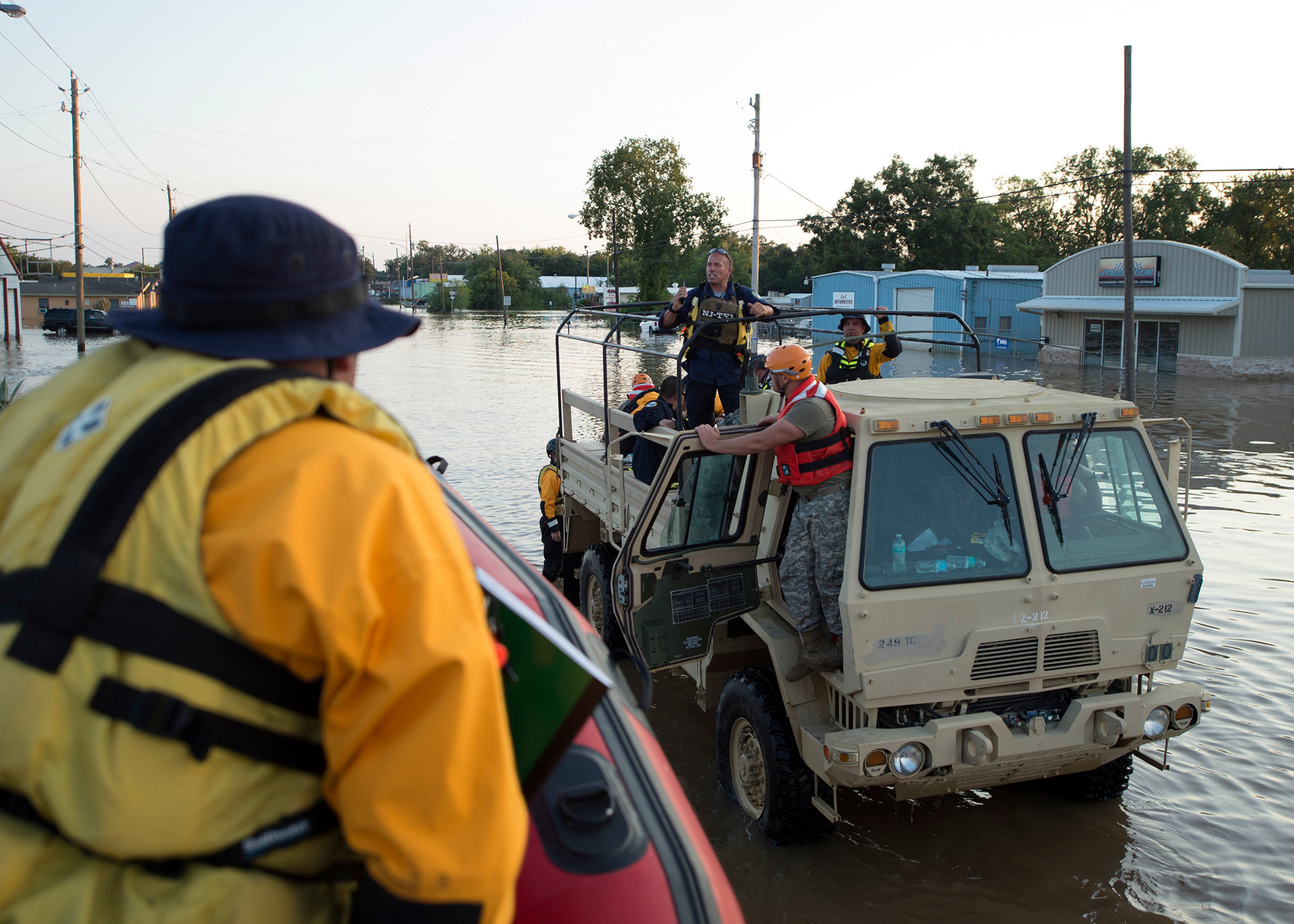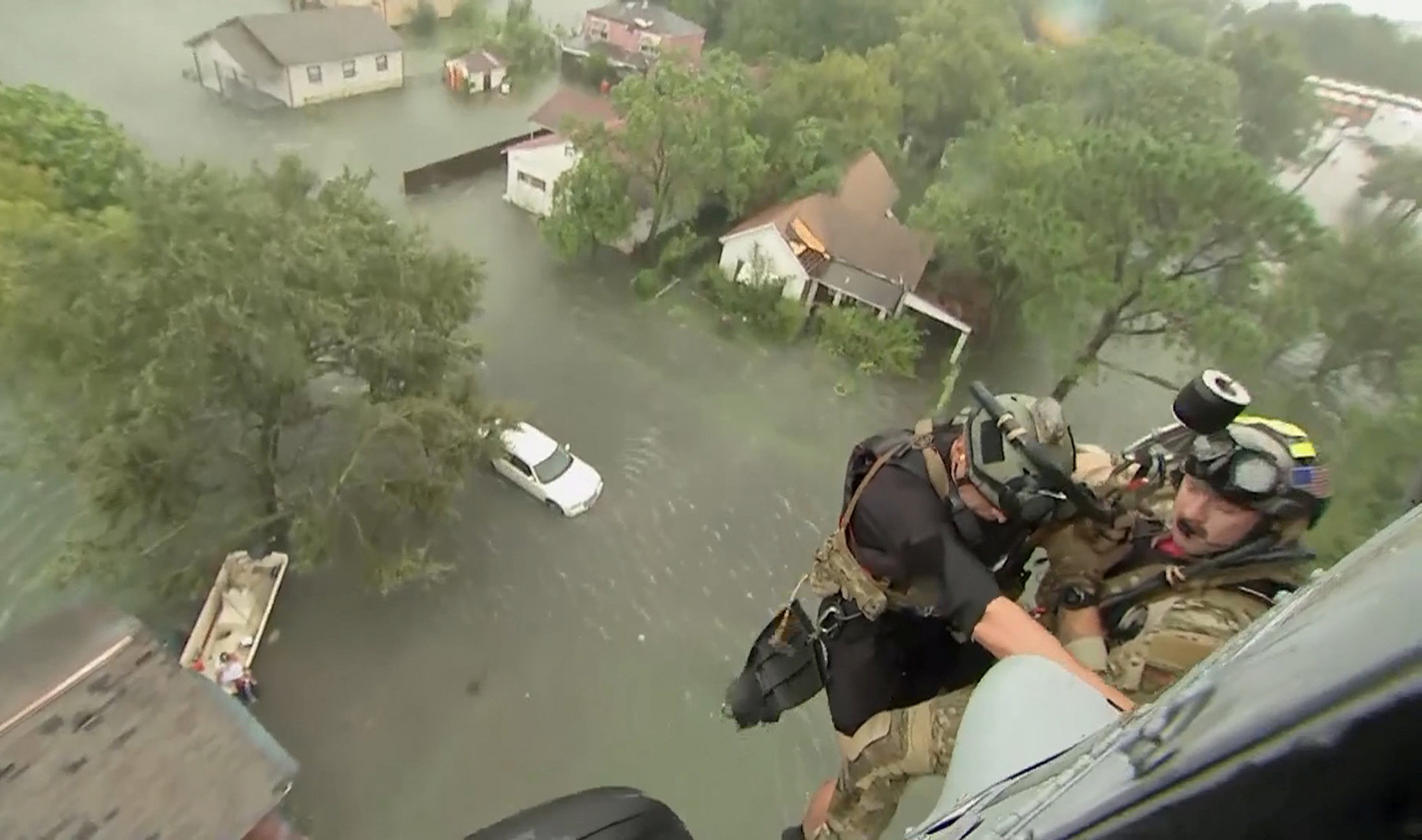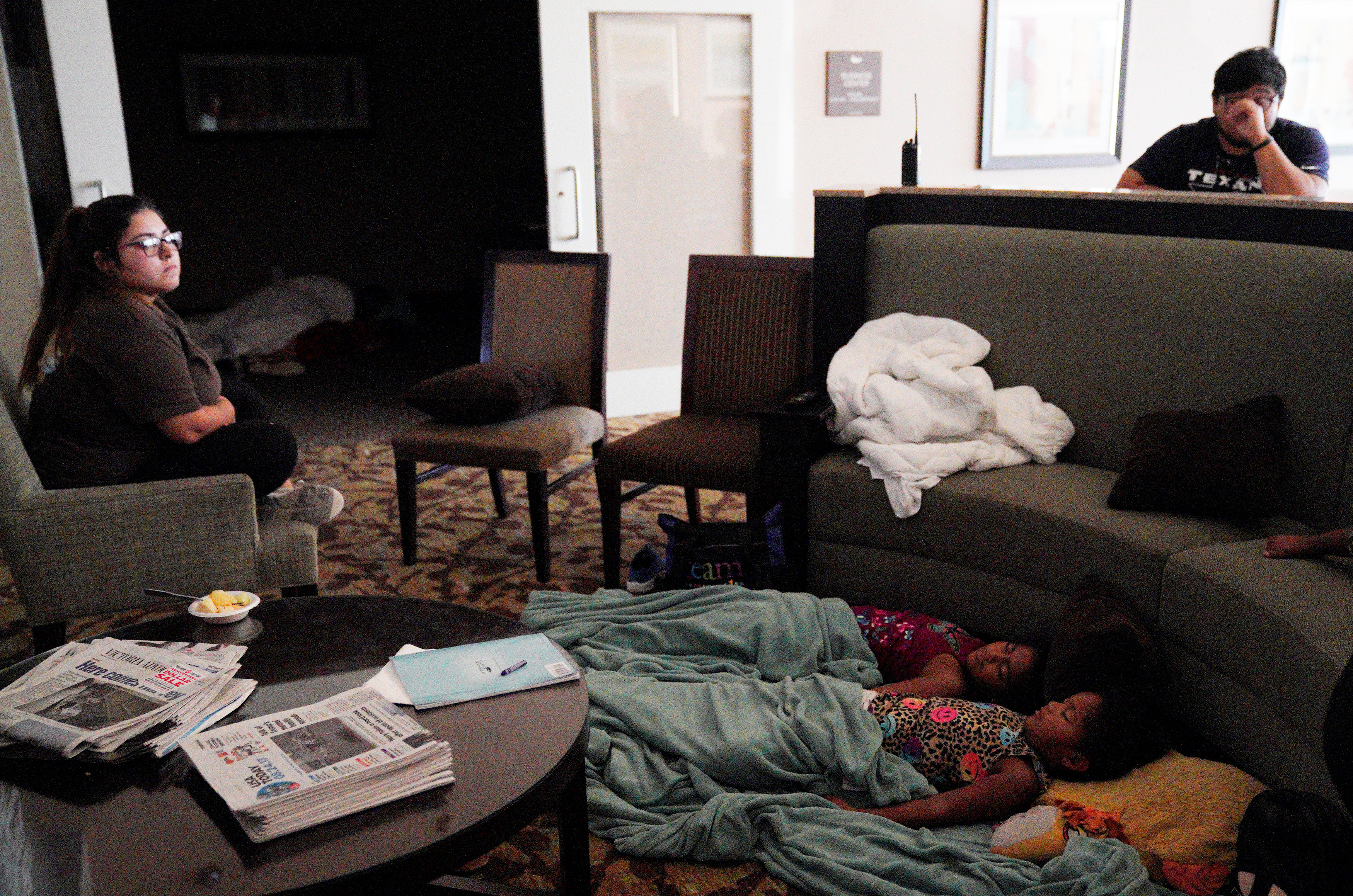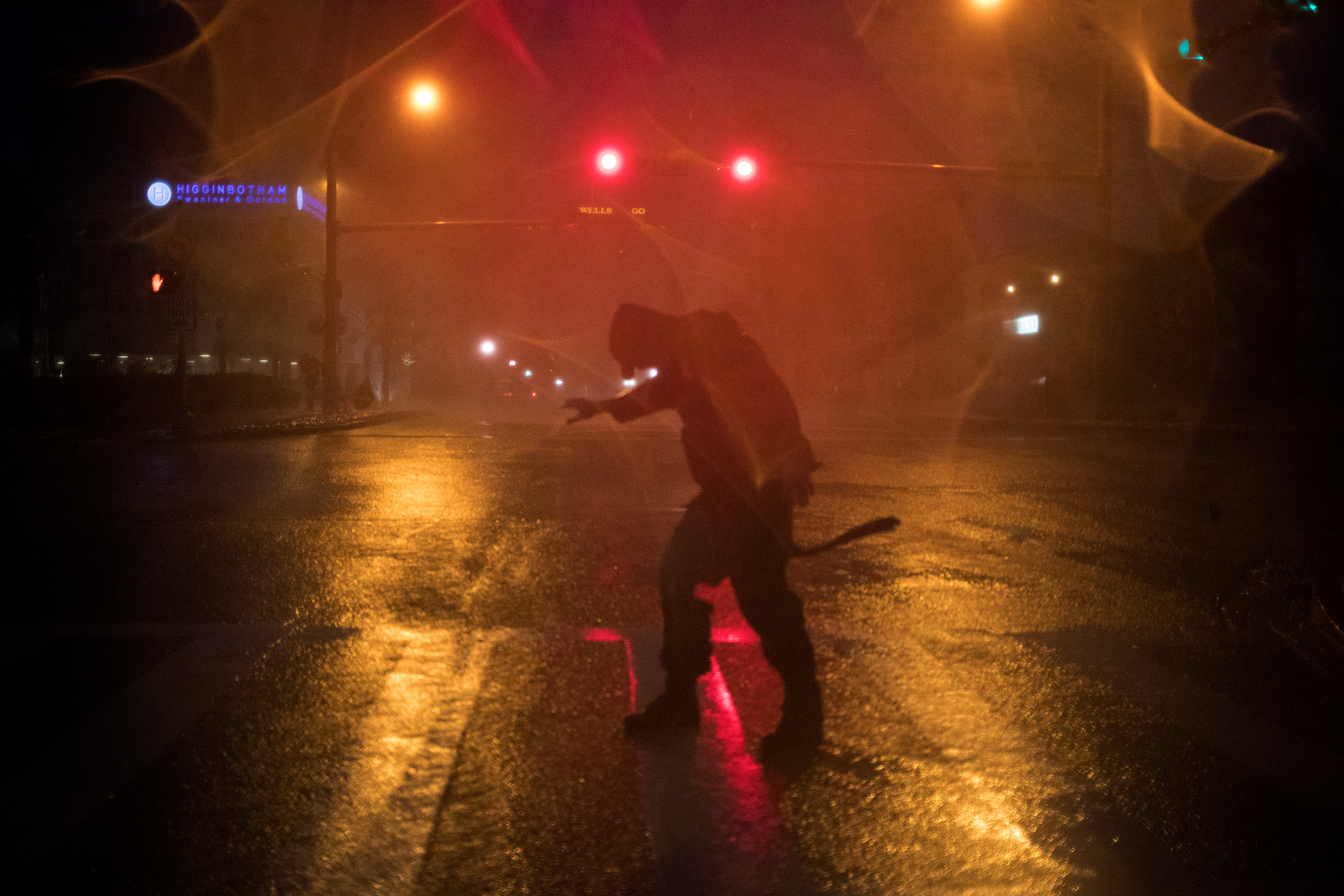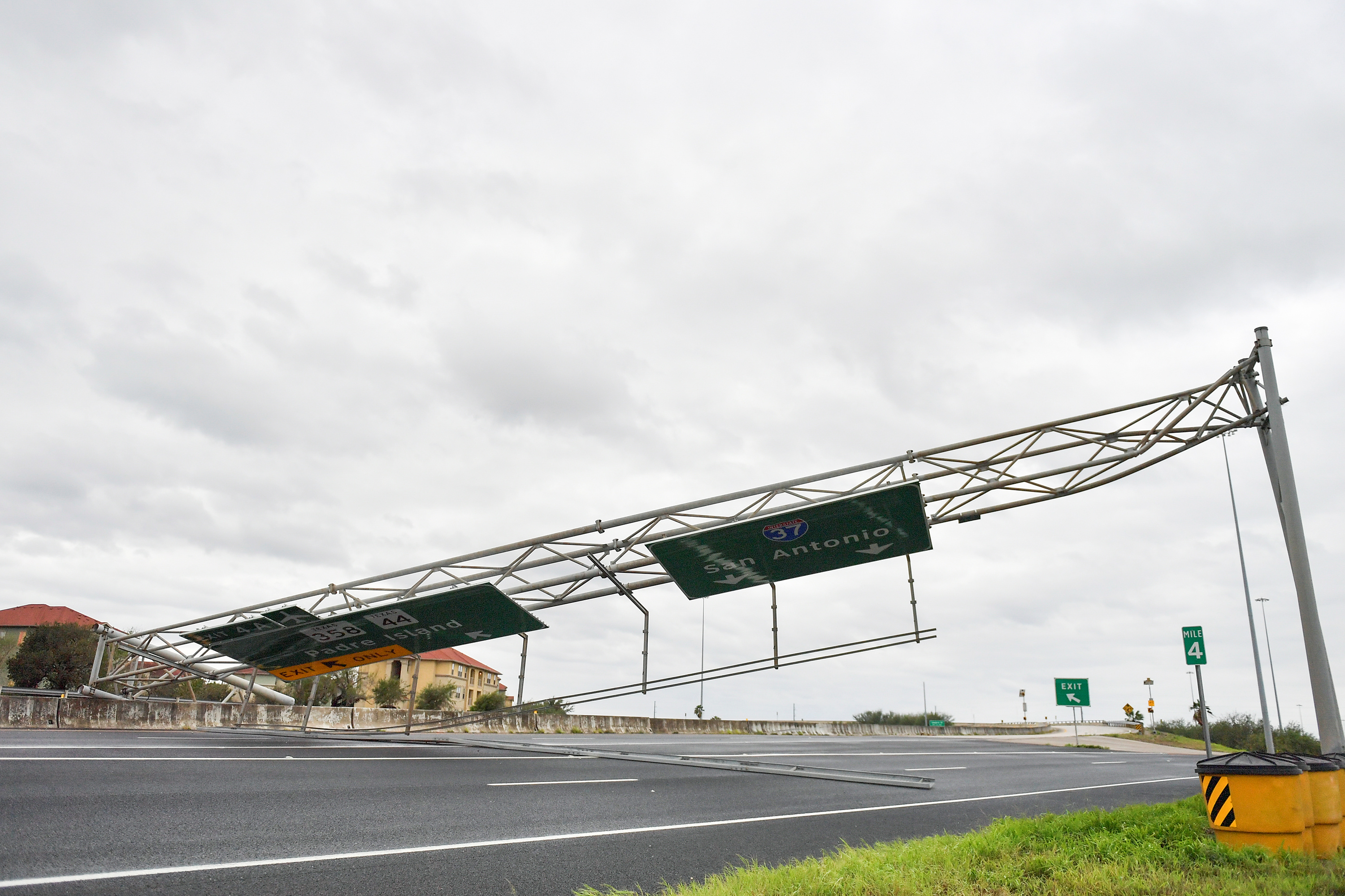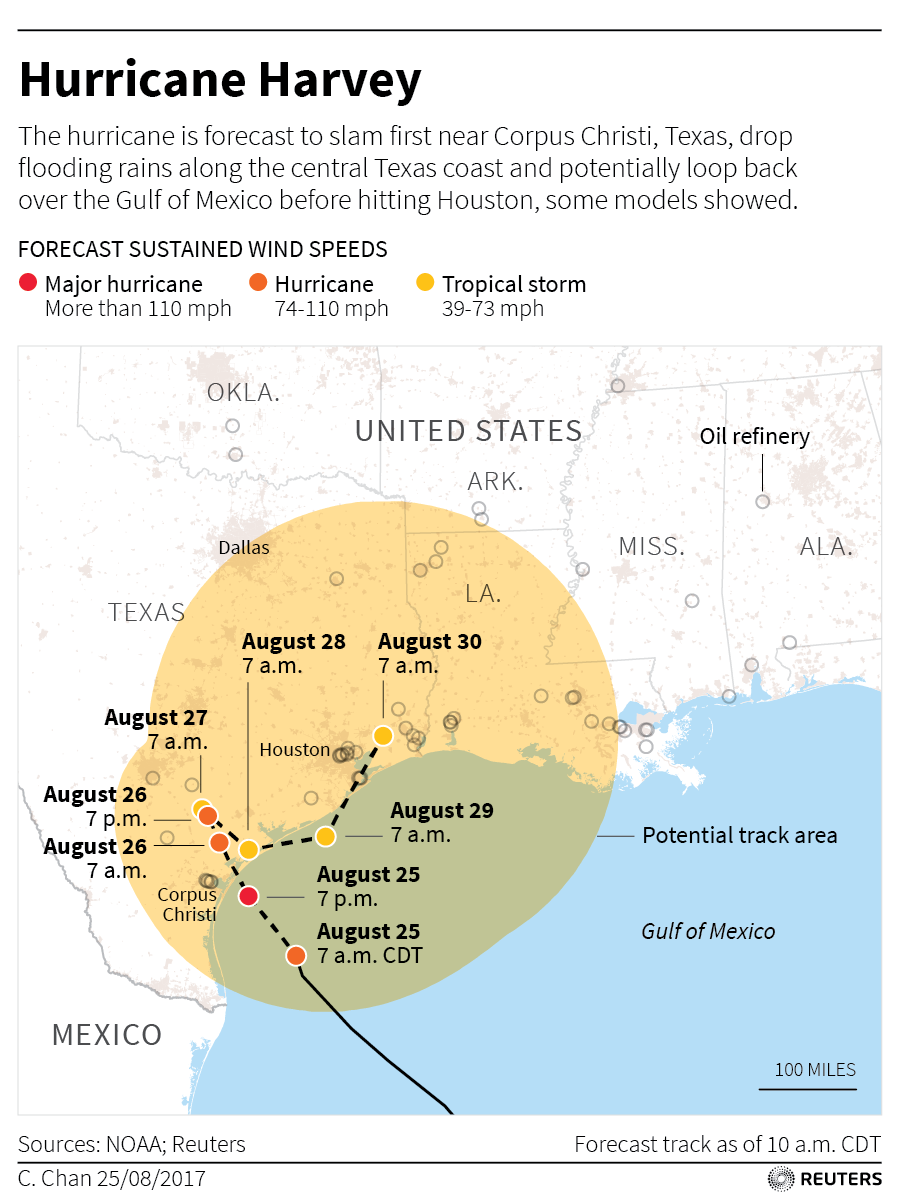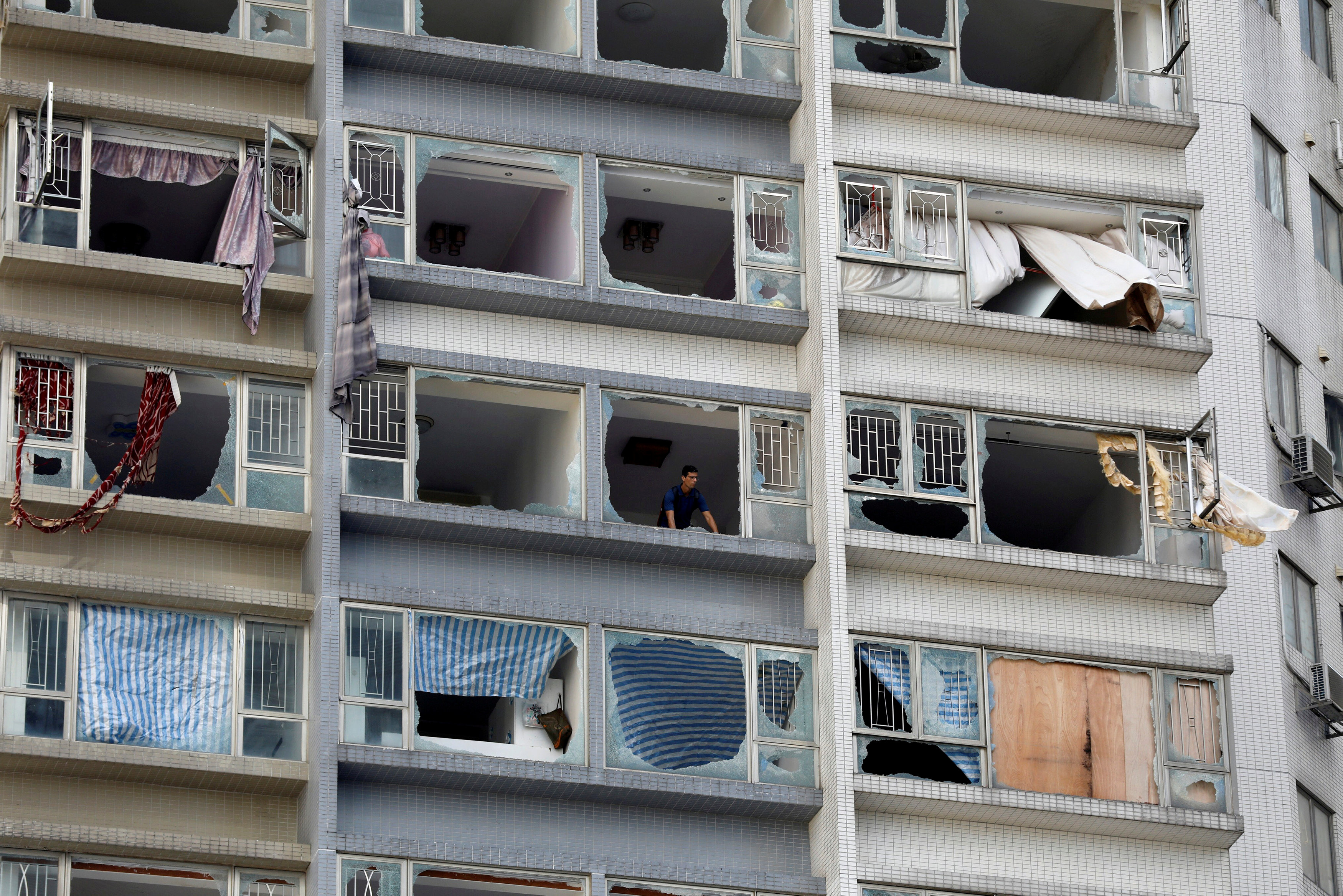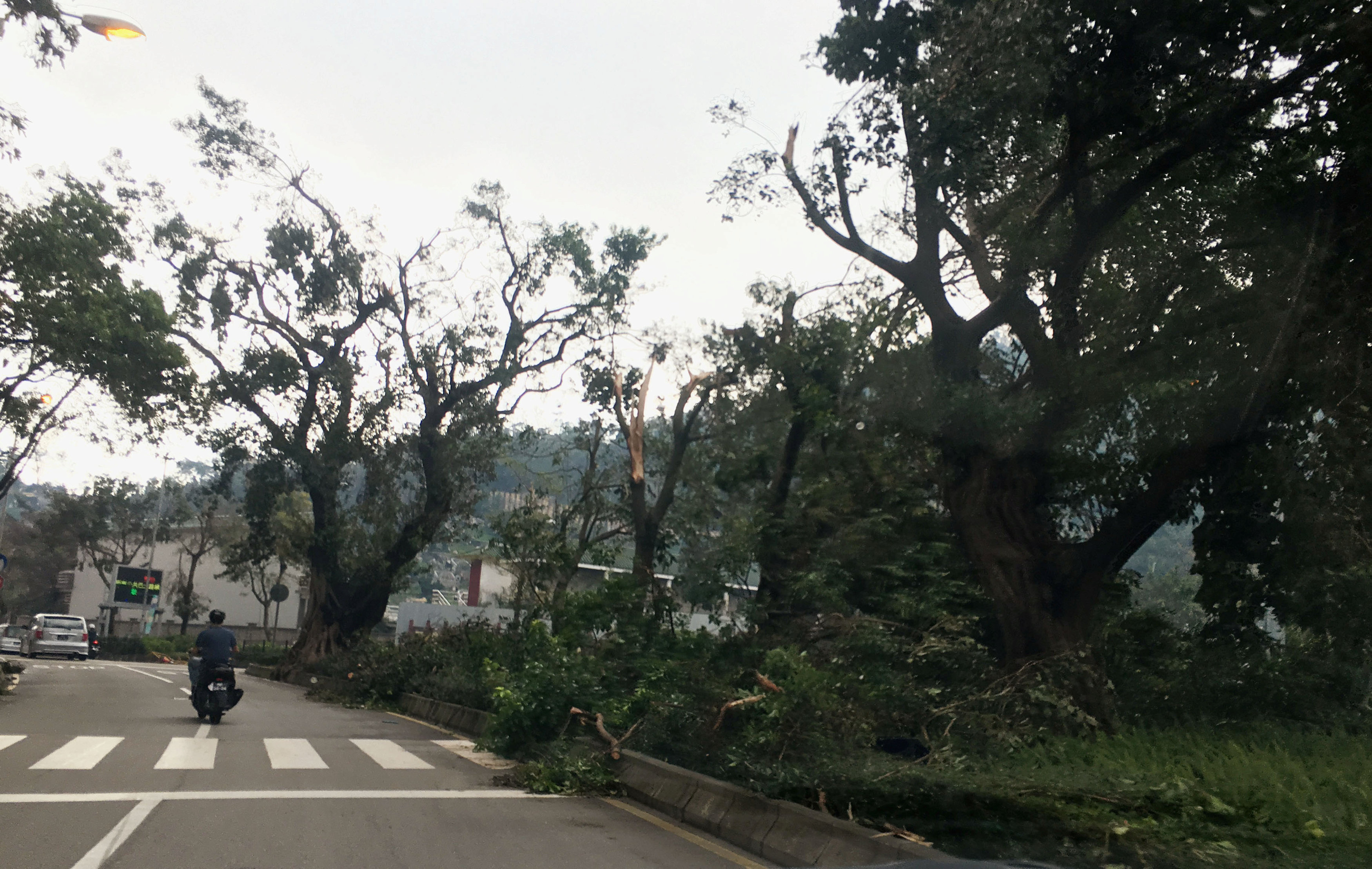
By Daniel Trotta
HOUSTON (Reuters) – Texas takes another step toward recovery from Hurricane Harvey on Tuesday when many residents return to work for the first time since the storm devastated the Houston area, killing around 60 people and putting tens of thousands into emergency shelters. Many large Texas employers, universities and transit services are reopening or beginning full service on Tuesday after Labor Day, some for the first time since Harvey struck the state on Aug. 25.
Oil refineries, pipelines and shipping channels in the nation’s energy center have begun a gradual return of operations. Exxon Mobil <XOM.N>, Halliburton <HAL.N> and Chevron <CVX.N> are among the scores of Houston businesses reopening their doors to office workers. Texas A&M University in Corpus Christi and the University of Houston also are resuming classes Tuesday.
The storm first hit Corpus Christi in the south and traveled up the coast, dumping up to 51 inches (129 cm) of rain in places across the region and flooding homes and businesses.
Texas residents who fled to Austin, San Antonio and Dallas ahead of the storm returned to check on their homes as flooded streets drained.
In Houston, travel north and east of the city eased over the weekend and highways filled as more gasoline stations opened and supplies, while tight, proved adequate.
Exxon said its Spring, Texas, campus was unaffected by the heavy rains. But employees who need to work remotely are encouraged to do so, spokeswoman Suann Guthrie said.
Houston Metro, a regional transit provider, said it would open all its parking lots and rush-hour lanes on Tuesday.
Most roads have reopened but travel in some areas west of the city remains difficult. ConocoPhillips’ <COP.N> headquarters on the west side is closed until Sept. 11 due to flooded roads.
Houston’s school district, the seventh largest in the nation, also remains closed this week to repair flooded schools. The district has said about 75 of its 275 schools suffered major or extensive flood damage.
As Houston picked up the pieces from the devastation of Harvey, a new hurricane threat appeared, this time headed for the Caribbean islands, the U.S. East Coast and Florida.
Hurricane Irma was upgraded to a powerful Category 4 storm on Monday as islands in its path braced for its impact. Hurricane advisories were issued for territories that dot the West Indies, including parts of the Leeward Islands, the British and U.S. Virgin Islands and Puerto Rico in preparation for the storm.
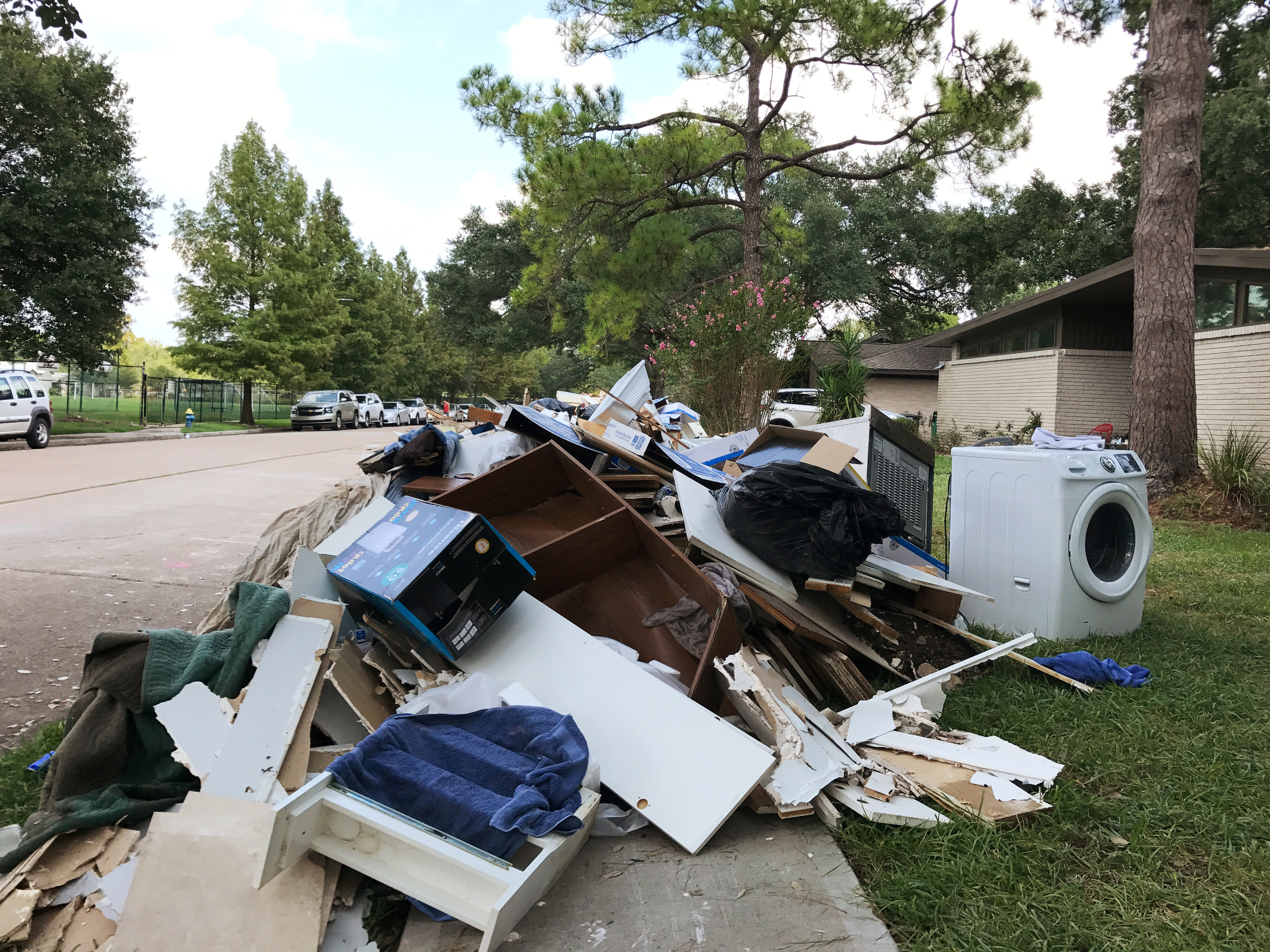
Rotting drywall and other material ripped out of homes damaged by Tropical Storm Harvey sits on the edge of a residential street in Houston’s Meyerland neighborhood in Houston, Texas, U.S., September 4, 2017. REUTERS/Ernest Scheyder
ENERGY SECTOR
In Texas, shipping channels, oil pipelines and refineries restarted some operations on Monday and authorities lifted an evacuation order for the area around a once-burning chemical plant.
Port operations across the U.S. Gulf Coast oil and gas hub were resuming, although many still had restrictions on vessel draft, according to U.S. Coast Guard updates.
U.S. gasoline prices fell in expectation that the area can get back on its feet after Harvey cut a path of destruction across more than 300 miles (480 km). Benchmark U.S. gasoline futures <RBc1> fell by more than 3 percent on Monday.
The Coast Guard allowed some barge traffic to enter Port Arthur, Texas, home of the country’s largest oil refinery, and is considering allowing ships to enter on Tuesday, a spokesman said.
Flooding from Harvey caused fires at the Arkema SA <AKE.PA> chemical plant in Crosby, some 25 miles (40 km) northeast of Houston.
But on Monday, the company said the Crosby Fire Department had lifted a 1.5-mile (2.4-km) evacuation zone around the plant, allowing people to return to their homes.
The lifting of the order may help residents like Paul Mincey, a 31-year-old tugboat engineer who has been kept out of the ranch home he shares with his girlfriend, return to normal.
“It could be full of snakes for all we know. We have no idea what’s in there,” Mincey said from aboard a tugboat in the Houston Ship Channel, which he said was polluted by floating railroad ties, trees and trash strewn by the storm.
HOW TO PAY?
The question of how to pay for hurricane recovery became more urgent in Washington after Texas Governor Greg Abbott on Sunday increased his damage estimate to between $150 billion and $180 billion.
Republicans and Democrats returning to Washington on Tuesday after a month-long break will need to put differences aside in order to approve an aid package. U.S. Treasury Secretary Steven Mnuchin challenged Congress to raise the government’s debt limit in order to free up relief spending.
The U.S. House of Representatives will vote Wednesday on $7.85 billion in emergency relief funds for the Federal Emergency Management Agency (FEMA) and the Small Business Administration and plans another vote later this month on a separate $6.7 billion sought by President Donald Trump.
The Texas Department of Public Safety on Monday estimated damage to public property at $382.3 million. Some 190,000 homes were damaged and another 13,500 destroyed, the Texas Department of Public Safety said.
For a graphic on Hurricane costs, click: http://fingfx.thomsonreuters.com/gfx/rngs/STORM-HARVEY-RELIEF/010050LZ1F3/index.html
For a graphic on storms in the North Atlantic, click: http://fingfx.thomsonreuters.com/gfx/rngs/STORM-HARVEY/010050K2197/index.html
(Additional reporting by Barbara Goldberg in New York, Gary McWilliams in Houston and David Shepardson in Washington; Writing by Alistair Bell; Editing by James Dalgleish)
